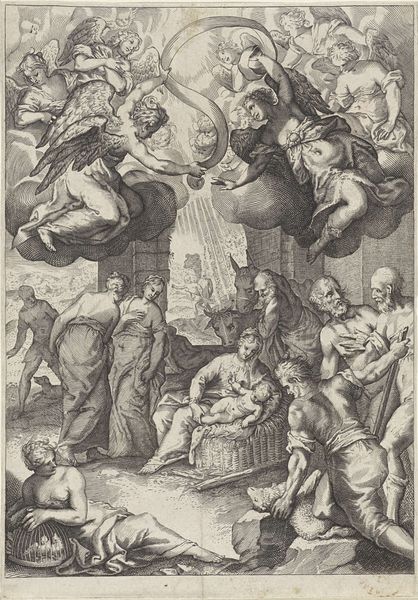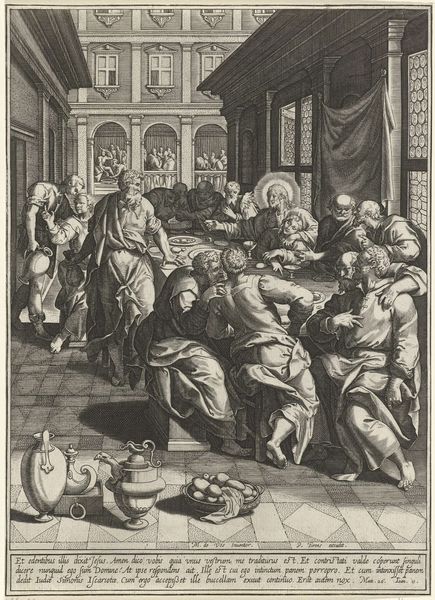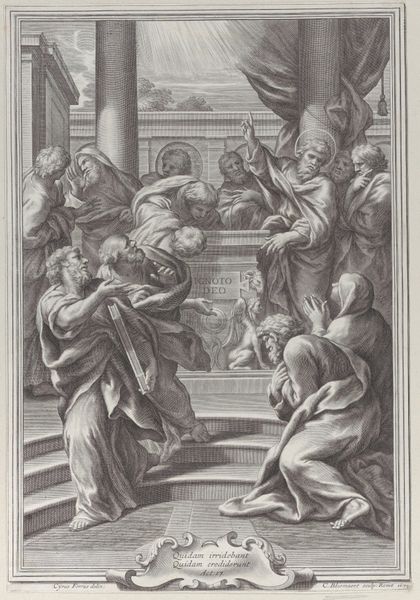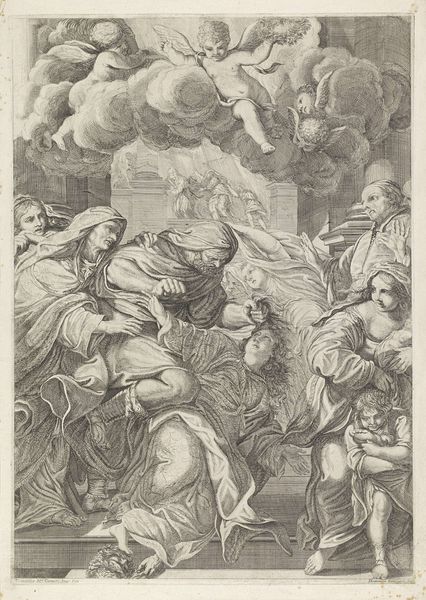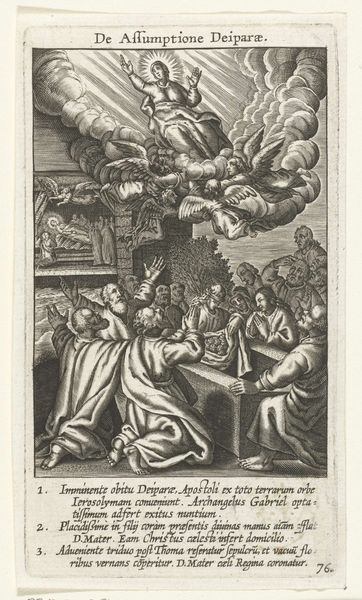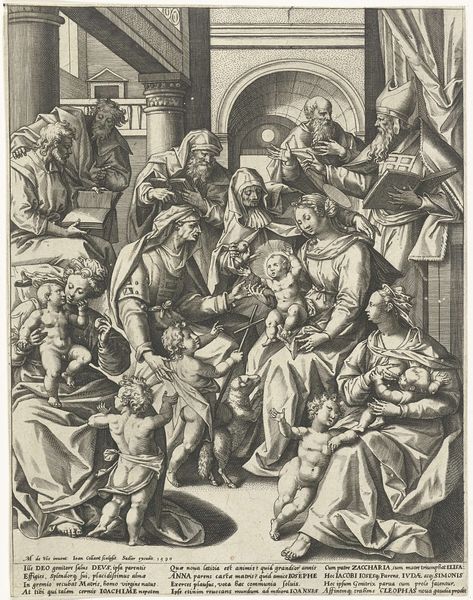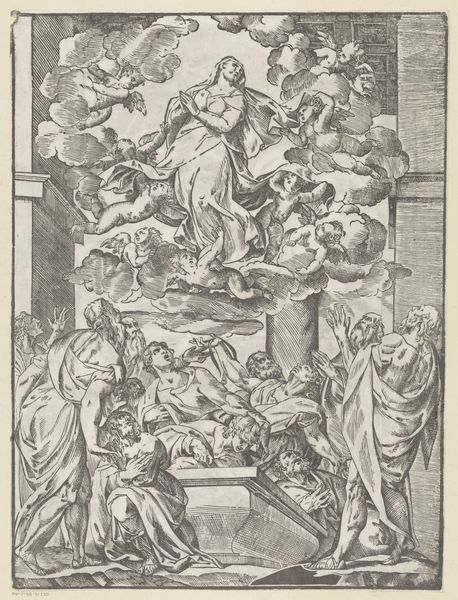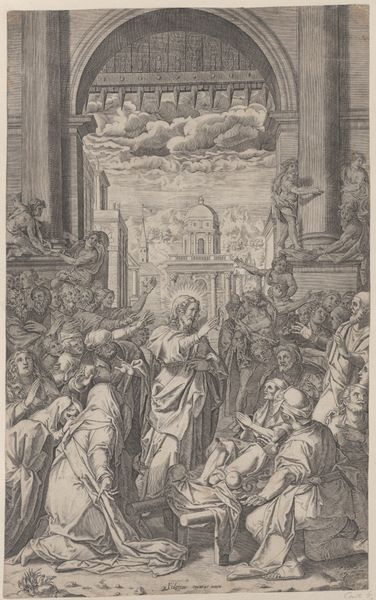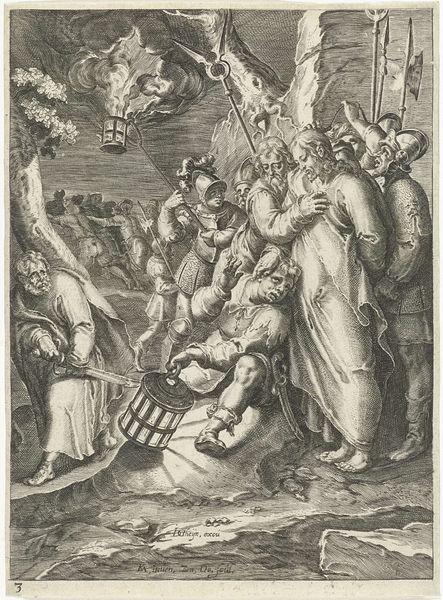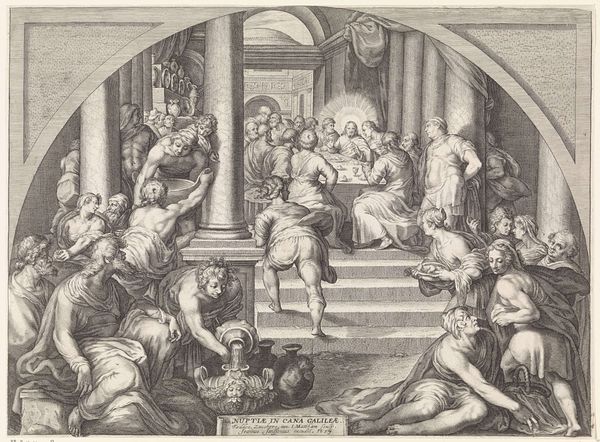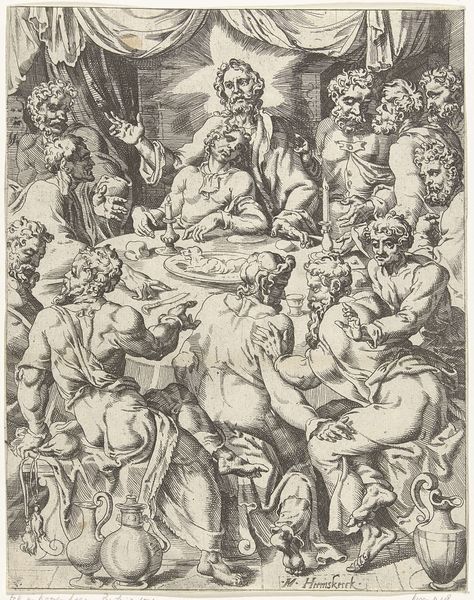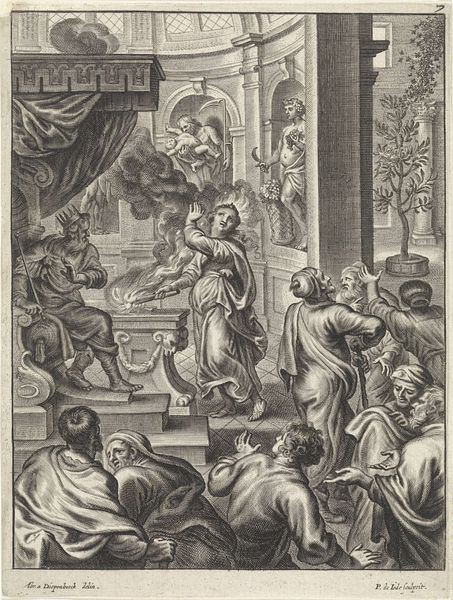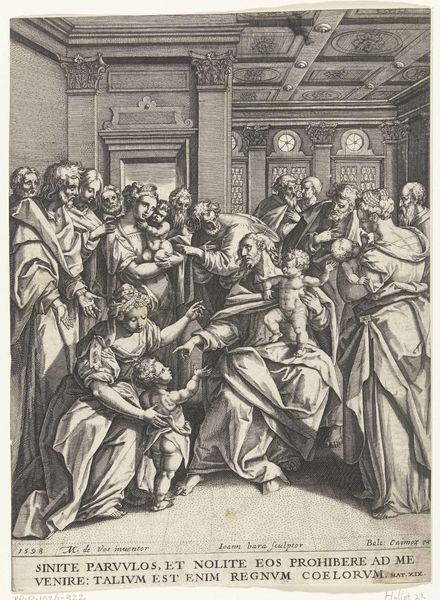
print, engraving
#
narrative-art
#
baroque
# print
#
old engraving style
#
figuration
#
limited contrast and shading
#
history-painting
#
engraving
Dimensions: height 477 mm, width 295 mm
Copyright: Rijks Museum: Open Domain
Editor: This is "Uitstorting van de Heilige Geest," or "The Descent of the Holy Spirit," an engraving from between 1574 and 1624, located here at the Rijksmuseum. It's an anonymous work, but the level of detail is amazing. It has a very theatrical feel. What do you see in this piece, from your perspective? Curator: What strikes me is the performative aspect of witnessing and belief, staged within what looks like a very rigid architectural structure. Consider how the subjects in the foreground, perhaps disenfranchised or marginalized figures, are literally closer to the viewer. Do you notice how their expressions, their bodily contortions, seemingly beg for divine intervention, or perhaps social mobility, against the backdrop of established power represented by those imposing columns? Editor: I see what you mean about the architectural structure. It's very classical and contrasts with the figures' dramatic expressions. Are you suggesting the artist is making a statement about social inequality? Curator: It’s more of an invitation to consider the intersecting forces at play. Religious narrative intertwines with societal structures. Who has access to the divine, or perhaps more practically, to power and representation? Think about the visual language employed here, the distribution of light, the direction of gazes… all subtly reinforcing existing hierarchies but also hinting at the possibility of disruption from below. This challenges the very idea of imposed hierarchical structures. Editor: So, the artwork can be viewed as a critique of power dynamics? Curator: Precisely! It’s not just about a religious event, but also about who gets to experience transcendence, or liberation, and within what constraints. What possibilities were available in 17th century Netherlands when religious prints had explicit purposes. Editor: I never would have thought of it that way just by looking at it! It really changes my perception of the piece. Curator: These old master prints can reveal a new world. I will never forget how art is always connected to social, cultural, and political power relations.
Comments
No comments
Be the first to comment and join the conversation on the ultimate creative platform.
